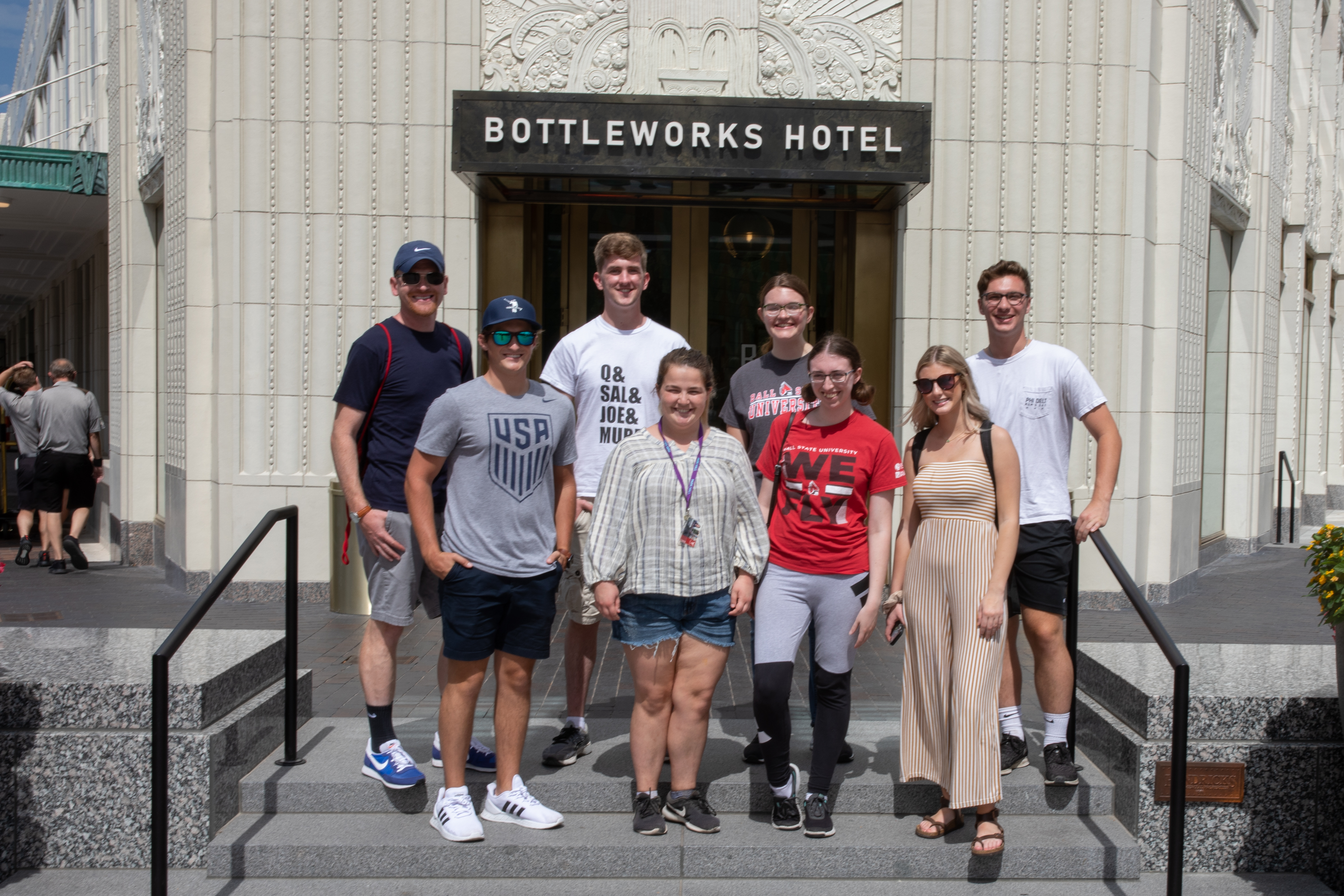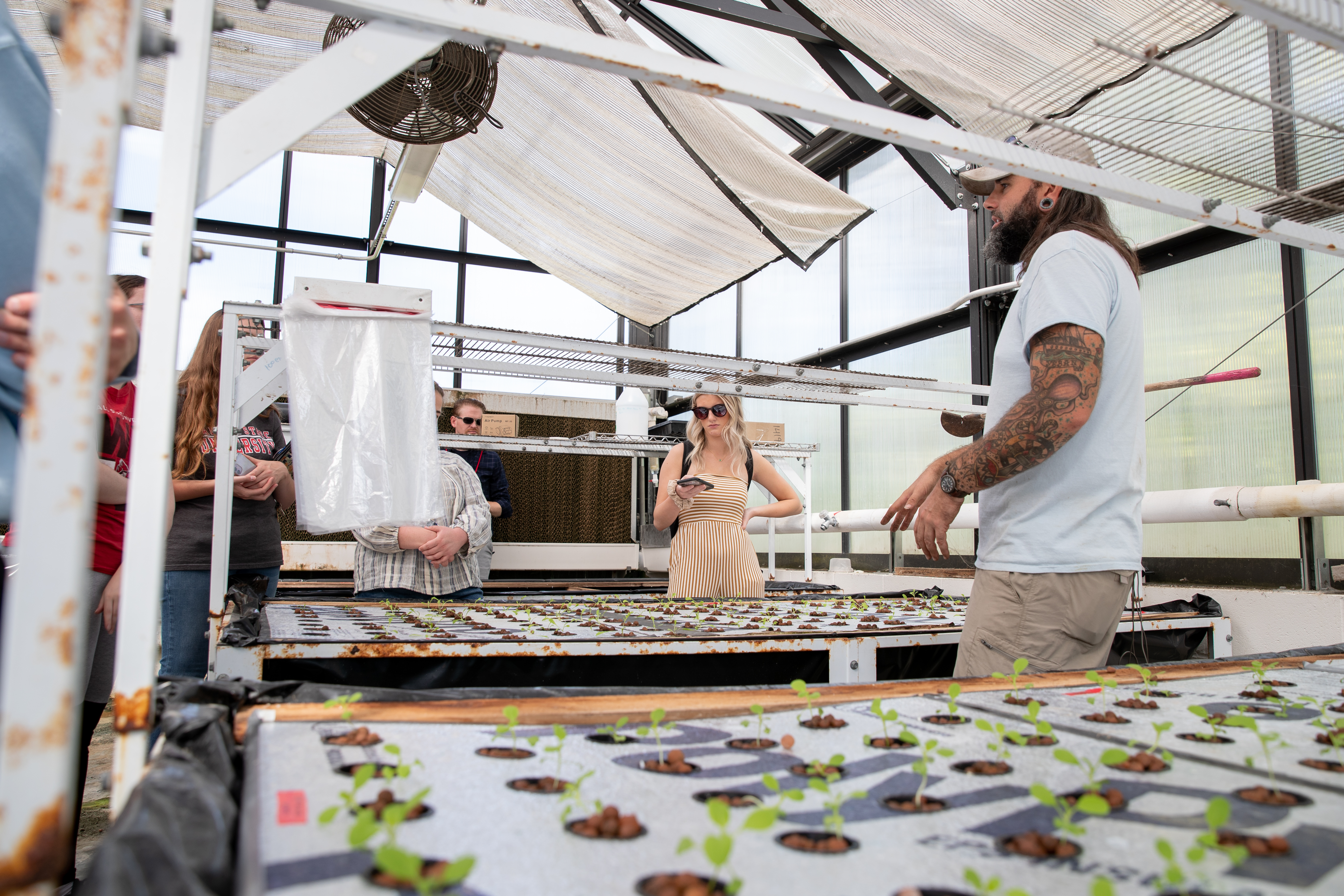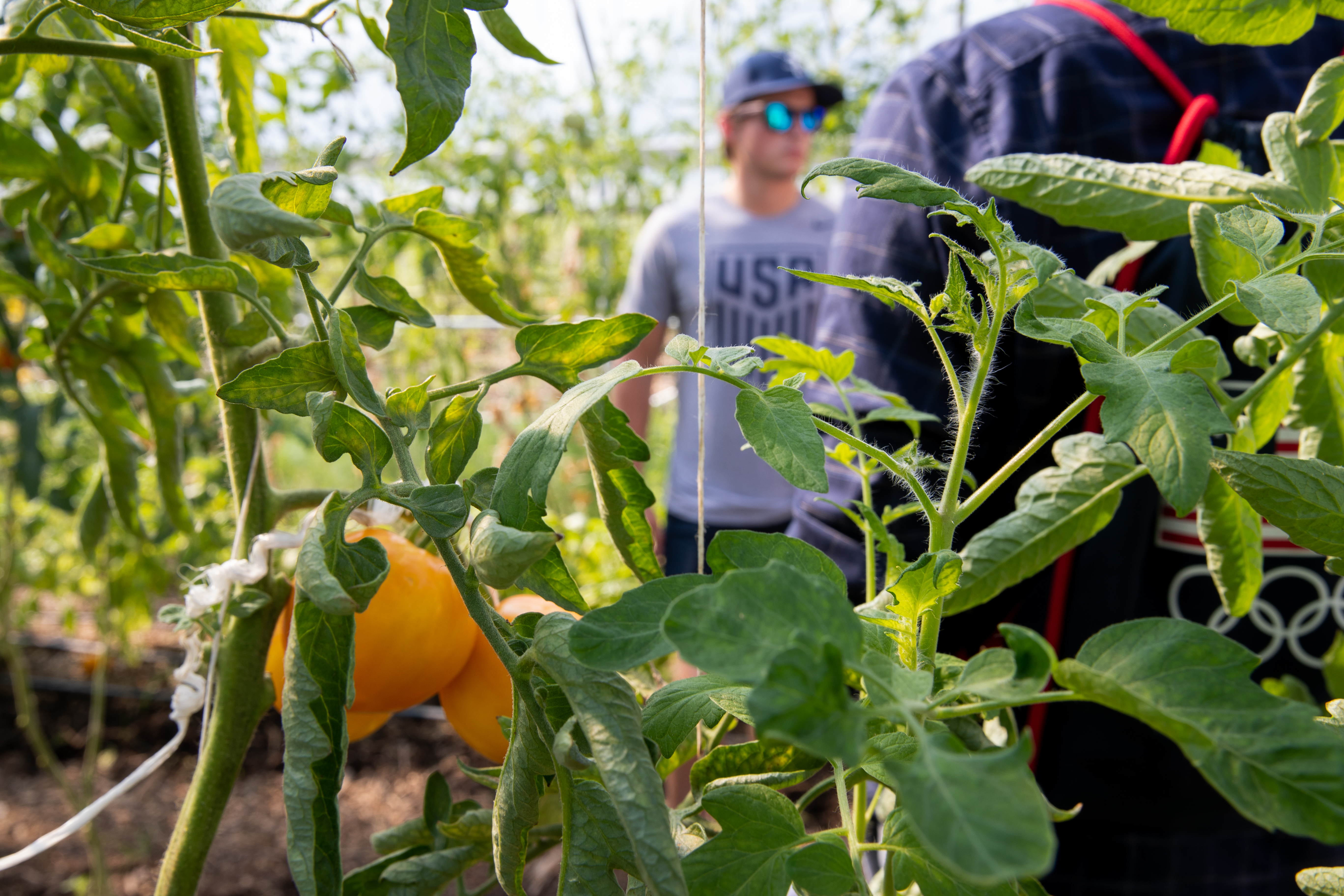By Hannah Kirkpatrick
Ball State University students see their pieces on Indiana sustainability issues in three local outlets as part of a capstone reporting class at the college.
“It's meant to be that last curricular stop before the students go out into their entry-level positions,” said professor Adam Kuban, who runs the class. “How can we build their depth of knowledge and have them produce content that allows them to immediately apply that newfound depth of knowledge?”
Kuban decided to base the course around the broad topic of sustainability, giving students the opportunity to write about issues spanning energy, food, water quality and more. They report out stories picked up by papers in the USA Today network.
Their mandate is loose, but the editing process is rigorous. Students huddle with Kuban before revised drafts are sent to Deanna Watson, a regional editor in the USA Today network based out of Lafayette.
 Originally, the idea was to have Watson cover the project. Ball State’s journalism and geography departments would work together, with the geography students creating a public data-backed map and the journalism students bringing stories of sustainable efforts across Indiana. The entire project would be put together and published via the school.
Originally, the idea was to have Watson cover the project. Ball State’s journalism and geography departments would work together, with the geography students creating a public data-backed map and the journalism students bringing stories of sustainable efforts across Indiana. The entire project would be put together and published via the school.
The project developed further, and now students also write for three outlets across central Indiana: the Lafayette Journal and Courier, the Muncie Star Press and the Richmond Palladium-Item.
The project has also partnered with Indiana University–Purdue University Indianapolis and Indiana University's Environmental Resilience Institute.
Geography students created an interactive map of Indiana and developed the website where the stories are shared and organized.
Adam Berland, the professor who manages the geography students, finds his group benefits in many of the same ways as their journalism peers.
“The journalism students are getting stories in the newspaper that people in the community are seeing, and they can go into job interviews with a tangible product,” Berland said. “For my geography students, it's the same way. They can point to our website and say, ‘Look, this is a product that I was part of.’”
Berland also highlighted the professional skill development offered to geography students.
“Working with a team, working with a client, operating on a big project that is multiple months long and has a deadline and communicating, clearly documenting their work. All of those types of things are really important professional skills that most college classes don't give you a chance to practice,” he said.
Journalism students are not paid but come away from the capstone course with three credits and a collection of clips to jumpstart their careers after graduating.
And the students’ work has reach, Kuban said. No student story has had fewer than 2,000 page views, Kuban said, and all the pieces spurred lively comment-section conversations among readers.
“Any way you look at it, there has been engagement,” he said. “And so for these students, it's kind of a win because now they've got published content in actual USA Today–affiliated press for their portfolios.”
That their work generates a lot of buzz means students can show potential employers they know how to get readers interested.
Audience engagement isn’t always as simple as page views, however. Comments from readers show the stories make people think — and they offer students a chance to identify constructive criticism within the heated fray sustainability issues can attract.
“Remove the personal attacks that they might have about you or your writing or the outlet in general,” Kuban tells his students. “Is there any part of this that's actually valid, constructive criticism?”
Exercises like that set the students up for public-facing careers as journalists.
“There's a reality check here for students where we have (to say), ‘Hey, you need to have a thick skin,’” Kuban said. “Any time you're doing something that matters or that is of significance, you're going to have detractors. You're going to have supporters, too. But that's just the polarized world we live in right now. Coming to terms with that is sometimes easier said than done with students.”
 Students are excited to share stories from their community and get published as undergraduates. Seniors Vincent Martorano and Jessica Norton wrote articles on organic farming and soil health for the fall 2022 capstone course.
Students are excited to share stories from their community and get published as undergraduates. Seniors Vincent Martorano and Jessica Norton wrote articles on organic farming and soil health for the fall 2022 capstone course.
“I walked into our newsroom and one of my professors was like, ‘Hey, Vinny, you're on the front page of the Muncie Star Press.’ I was like, ‘That is really cool,’” Martorano said.
“It is a huge step for us and will help us once we graduate to have published works already out there,” Norton said.
Looking forward, Berland said project leaders would like to continue adding more content. One way the program will do that is through a crowdsourcing effort.
“If somebody works for an organization or knows of an organization that prioritizes sustainability in their operations, we have a forum online where they can contribute ideas for future stories,” said Berland. “There's 92 counties in Indiana, and we don't have stories from 92 counties right now. We want to make sure that we hit every county.”
And for the spring 2023 semester, the capstone course will expand its scope to examine other issues facing the state.
“We're going to change the subject to health and health care,” Kuban said, “talking about pharmaceutical drugs, addiction, exercise — all of these different areas under that umbrella of health and health care and write stories about that in very much the same model.”
He can speak endlessly to the benefits students get from the course. But he gets something out of it too.
“When I'm giving them feedback, these stories are going to be seen by hundreds, potentially thousands of people,” he said. “So that keeps my skills sharp. It is more time (and) more energy on my end. But I do think it's for a greater good.”
For more information:

